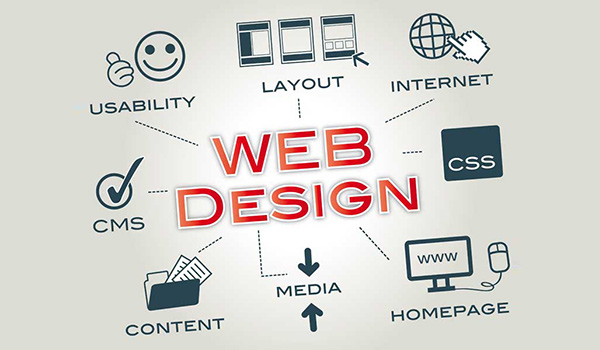Aligned Position Web Design: Transform Your Online Presence with Expert Web Design Services
Aligned Position Web Design: Transform Your Online Presence with Expert Web Design Services
Blog Article
The Finest Kinds Of Web Layout to Boost Individual Experience and Involvement
In the ever-evolving landscape of electronic interaction, the efficiency of Web design significantly impacts user experience and engagement. Various design techniques, such as minimal, receptive, and interactive designs, each offer special benefits that can cater to diverse customer demands.
Minimal Website Design
As electronic landscapes come to be progressively messy, minimal Web layout has actually become a powerful approach to enhancing customer experience. This design approach focuses on simpleness, concentrating on crucial aspects while removing unneeded interruptions. By using ample white room, simple navigation, and a restricted color combination, minimal style fosters clearness and guides individual focus to key content.
The core principle of minimalist Web style is to produce a seamless interaction for individuals. By decreasing cognitive load, individuals can promptly grasp info without feeling bewildered. This straight approach not only enhances usability however likewise encourages engagement, as visitors are extra likely to check out a site that is very easy and visually attractive to navigate.
In addition, minimalist design typically stresses typography and images, making use of these aspects strategically to communicate messages effectively. This emphasis on essential components can enhance brand identity and produce an unforgettable user experience. Fundamentally, minimalist Web style is not just a pattern; it is a thoughtful methodology that acknowledges the value of user-centered layout. By removing nonessential aspects, designers can produce a much more engaging, reliable, and pleasurable Web experience for all users.
Responsive Web Layout
In today's diverse digital environment, responsive Web layout has actually become necessary for creating a smooth customer experience throughout a wide variety of devices. As users access sites on smartphones, laptops, tablets, and desktops, the ability of a website to adapt its format and material to different screen sizes and resolutions is crucial.
Receptive website design utilizes adaptable grids, photos, and CSS media inquiries to make sure that Web material exists optimally, no matter the device utilized. This method not just boosts the aesthetic charm of a site but likewise substantially improves usability. Users are extra most likely to engage with a website that provides a constant experience, as it removes the frustration of needing to focus or scroll exceedingly.
In addition, online search engine, consisting of Google, prioritize mobile-friendly web sites in search positions. By embracing receptive style, businesses can boost their presence and get to a wider target market. This technique likewise simplifies web site maintenance, as a solitary version of the website can satisfy all devices, reducing the requirement for numerous versions. In recap, responsive website design is an essential method that improves user experience, interaction, and total satisfaction.
Interactive Website Design
Receptive Web design prepares for improving individual experience, but interactive website design takes this an action even more by engaging customers in an extra dynamic means - Aligned Position Web Design. By incorporating aspects such as animations, clickable models, and real-time responses, interactive website design astounds individuals, attracting them right into a richer browsing experience
This technique not just promotes involvement yet likewise encourages individuals to explore material actively as opposed to passively consuming it. Techniques such as gamification, where customers earn benefits for completing tasks, can substantially enhance the moment invested in a site and boost overall fulfillment. Interactive features can streamline intricate info, making it much more absorbable and satisfying.

Incorporating interactive design elements can also result in higher conversion rates, as individuals are more most likely to engage with a website that proactively involves them. Aligned Position Web Design. Eventually, interactive website design transforms customer experiences into unforgettable journeys, making sure that visitors return time after time
Apartment Style
Identified by its minimalistic strategy, level design stresses simpleness and capability, removing unneeded aspects and concentrating on necessary features. This layout viewpoint focuses on functionality, making sure that customers can navigate interfaces effortlessly and performance. By employing a clean visual, flat design gets rid of the clutter frequently found in more ornate styles, consequently improving user concentrate on web content and performance.
The hallmark of flat style hinges on its use bold shades, straightforward typography, and geometric forms. These aspects add to a visually attractive interface that is both modern-day and friendly. Additionally, flat design cultivates a feeling of quality, enabling individuals to discern vital activities and details without interruption.
In addition, level style is particularly efficient in responsive Web style, as its simpleness equates well across numerous gadgets and screen dimensions. By focusing on necessary functions, level layout not only meets customer needs however additionally motivates smooth interaction, making it an essential element of effective Web style approaches.
Adaptive Website Design
Adaptive website design customizes the individual experience by producing several taken care of designs customized to various screen dimensions and tools. Unlike receptive design, which fluidly adjusts a single format, flexible style employs distinct layouts for particular breakpoints, guaranteeing optimal presentation on various platforms. This approach permits developers to focus on the distinct characteristics of each device, enhancing usability by delivering exactly what users require based on their context.
One of the primary advantages of flexible website design is its capability to enhance load times and efficiency. By offering customized material and images that fit the individual's gadget, web sites can lessen data use and boost loading speeds. This is specifically useful for users with slower links or restricted information strategies.

In addition, flexible design facilitates a much more controlled and consistent branding experience. Given that developers produce numerous layouts, they can make sure that the visual components straighten with the brand name's identity throughout different systems - Aligned Position Web Design. This results in a natural individual experience, enhancing involvement and promoting individual retention
Final Thought
To conclude, the integration of minimal, responsive, and interactive their explanation website design principles substantially enhances customer experience and engagement. Minimal style promotes clarity and emphasis, while receptive style ensures flexibility across numerous tools, advertising access. Interactive layout astounds customers through dynamic components, encouraging exploration and customization. Jointly, these layout approaches add to the creation of straightforward atmospheres that not just enhance complete satisfaction yet additionally drive higher conversion prices, underscoring their crucial value in modern website design approaches.

Minimal style promotes clarity and emphasis, while responsive design useful link makes certain versatility across various devices, advertising access. Collectively, these layout comes close to add to the development of straightforward atmospheres that not just improve contentment but likewise drive greater conversion rates, emphasizing their critical value in modern Web layout methods.
Report this page